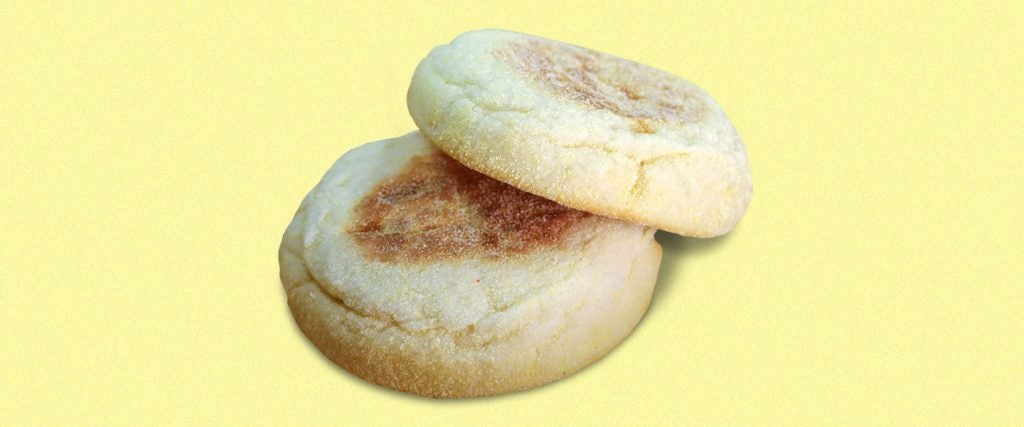If I’m being honest, I never liked English muffins. Something about their texture always disagreed with me. But as a kid, that didn’t mean I could avoid eating them, as I didn’t dare suggest to my mother that I would neglect a morsel of food that had been laid before me as the fruit borne by her hard-earned dollars. And so, I ate the toasted English muffins, orange marmalade and all.
For years, I assumed that my mother’s fondness for English muffins stemmed from her English upbringing. She was born in the Bahamas, which was a British crown colony at the time, and then lived in Liverpool and London for several years before relocating to the U.S. Anything I found bizarre about her behaviors or preferences, I generally attributed to the idiosyncrasies of her background. Imagine my shock, then, when I discovered that English muffins aren’t even English.
What do you mean they’re not English?
What I mean is that what we refer to as English muffins today were supposedly first created and baked in the U.S. by immigrant Englishman Samuel Bath Thomas in the 1870s. He also called them “toaster crumpets,” which frankly sounds a lot cooler to me than the name they were ultimately saddled with.
This origin story is somewhat fishy, although someone smarter than me can probably proffer a suitable explanation. That’s because food items labeled as English muffins were clearly advertised and sold under that label in Sacramento, Buffalo and New York City as early as the late 1850s and early 1860s. In any event, I’m not here to call anybody a liar; I’m just trying to report the facts.
Anyway, all of this is beside the point. What we’re really here to ascertain is whether or not we can render an unqualified opinion as to the healthy or unhealthy nature of English muffins.
English muffins aren’t exactly a one-size-fits-all food item. There are several different varieties of them available (my wife is partial to the cinnamon-raisin option), and this complicates the assessment of English muffins considerably. After all, we can’t come to a universal conclusion about the lot of them if they’re altogether different from each other nutritionally. So, let’s put them all to the test and see what shakes out.
I’m game if you are.
Let’s do this! Leroyyyyyy Jenkinsssssss! (Sorry. I couldn’t resist.)

Sifting through this mishmash of data, there’s nothing at all alarming about anything presented here. The recommended daily average of sodium intake is 2,300 calories according to the dietary guidelines established for Americans. This means that the largest English muffin on the list still supplies less than one-fifth of that allotment.
So English muffins are healthy?
Not so fast, Lee Corso.
Like any efficient meat holster, an English muffin is only as nutritious as the ingredients it carries within its breaded innards. If your daily lunch consists of three large English muffins layered with generous dollops of peanut butter and jelly, you’ve turned what could have been a 300-calorie bread-and-butter snack into a 1,500-calorie feast.
Moreover, any person who constructs a scheme for assessing the nutritious value of an English muffin on the basis of its isolated consumption — as if anyone eats an English muffin all by itself — is erecting an artifice of judgment potentially as misleading as the English muffin’s actual name.

